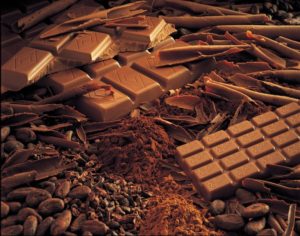Receive our newsletter
Your e-mail address is only used to send you our newsletter and information about the activities of Strasbourg Europe. You can always use the unsubscribe link included in the newsletter.
In 1921, the Swiss Confederation appeared, an alliance among 3 rural areas. Over the centuries, the alliance has enlarged. Each member manages its own affaires and different members are united only when tackling with the common questions.
Gruyères castle, Fribourg © Julia Slater / swissworld
Picture : the city of Bern © Bern Tourism
 Imported from Latin America by the conquistadors, chocolate, long jealously guarded by the Spanish, crosses the Swiss borders in the eighteenth century. Quickly the first small chocolate factories were created. They grew rapidly because of the high quality of the production of the chocolates. It was also at that time that emerged the idea to mix chocolate and milk. Today, 18 firms export chocolate in over 130 countries. Yet there are plenty of chocolate amateurs in Switerzland : almost half of the 160,000 tons of chocolate that are produced in Switzerland is consumed locally. The Swiss people are champions of the world in chocolate consumption : 11.7 kg per year per person in 2009.
Imported from Latin America by the conquistadors, chocolate, long jealously guarded by the Spanish, crosses the Swiss borders in the eighteenth century. Quickly the first small chocolate factories were created. They grew rapidly because of the high quality of the production of the chocolates. It was also at that time that emerged the idea to mix chocolate and milk. Today, 18 firms export chocolate in over 130 countries. Yet there are plenty of chocolate amateurs in Switerzland : almost half of the 160,000 tons of chocolate that are produced in Switzerland is consumed locally. The Swiss people are champions of the world in chocolate consumption : 11.7 kg per year per person in 2009.Picture : Swiss chocolate © Nestlé
CERN: In the heart of the matter
In the nineteen eighties, CERN was the birthplace of the “www”.
© Présence Suisse 2007 Département fédéral des affaires étrangères DFAE www.cern.ch
The most popular girl in the world

Solar energy in altitude, a path to follow
Quellen der Texte:
Your e-mail address is only used to send you our newsletter and information about the activities of Strasbourg Europe. You can always use the unsubscribe link included in the newsletter.
Information Center
on the European Institutions (CIIE)
Europe Direct Information Center
All rights reserved to the CIIE
Non-profit organization
Mailing address
1 allée Kastner
67000 Strasbourg
France
Visitors entrance
8 rue Boecklin
67000 Strasbourg
France
To provide the best experiences, we use technologies such as cookies to store and/or access device information. Consenting to these technologies will allow us to process data such as browsing behavior or unique IDs on this site. Failure to consent or withdrawing consent may adversely affect certain features and functions.
Europe Direct network
The CIIE team
Contact information and opening hours
Lieu d’Europe
The CIIE offices
Contact us
CIIE’s Documentation Centre & Publications
School presentations & Activities
Borrowing of learning material
Activities for the general public
Institutions of the European Union in Strasbourg
Institutions Under the Authority of the Council of Europe
Other European Organisations in Strasbourg
Sessions of the European institutions in Strasbourg
Visiting the institutions
Map of the European district of Strasbourg
Institutions in Strasbourg in photos
Discover artistic Europe
National holidays of the member states of the Council of Europe